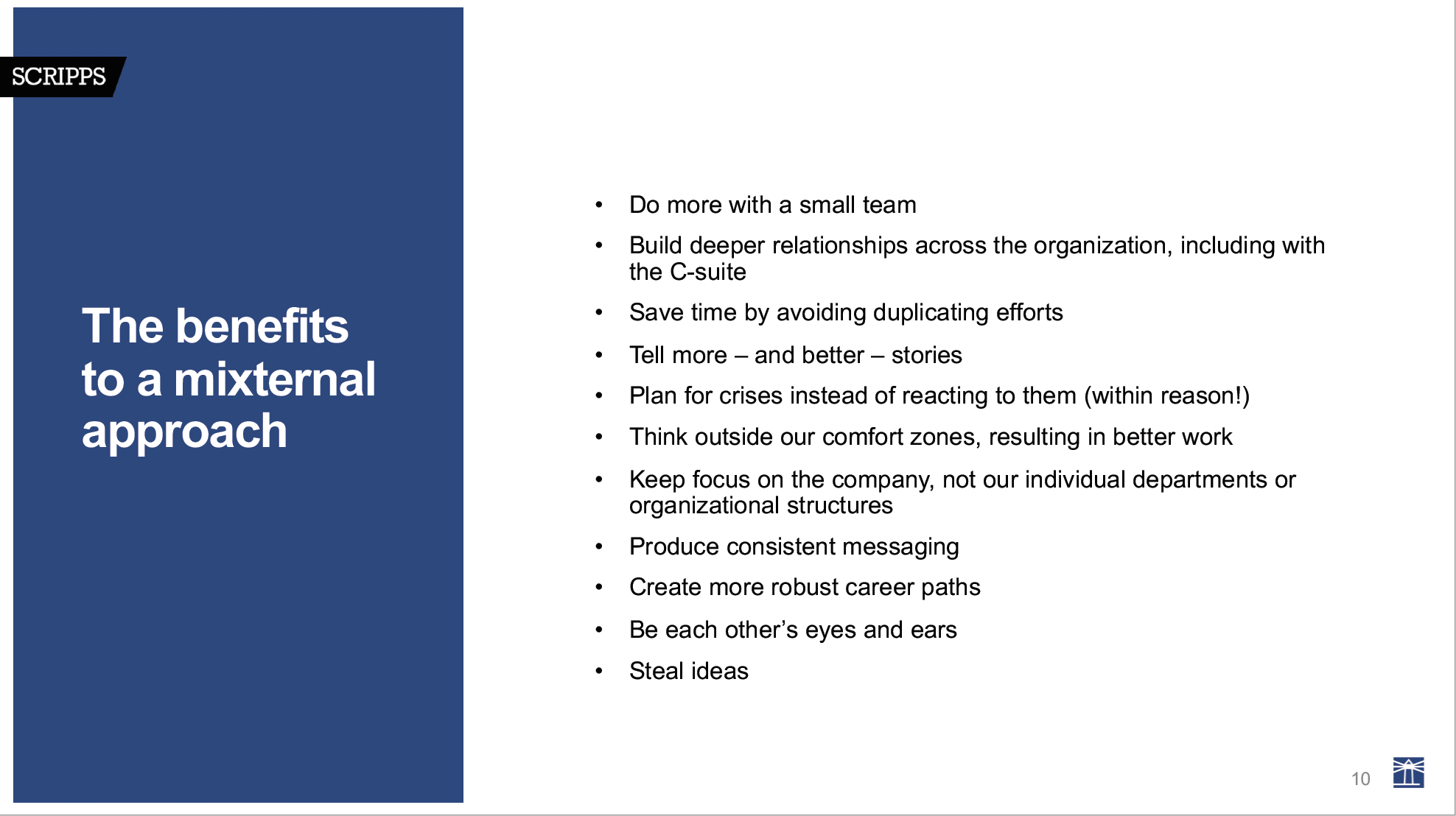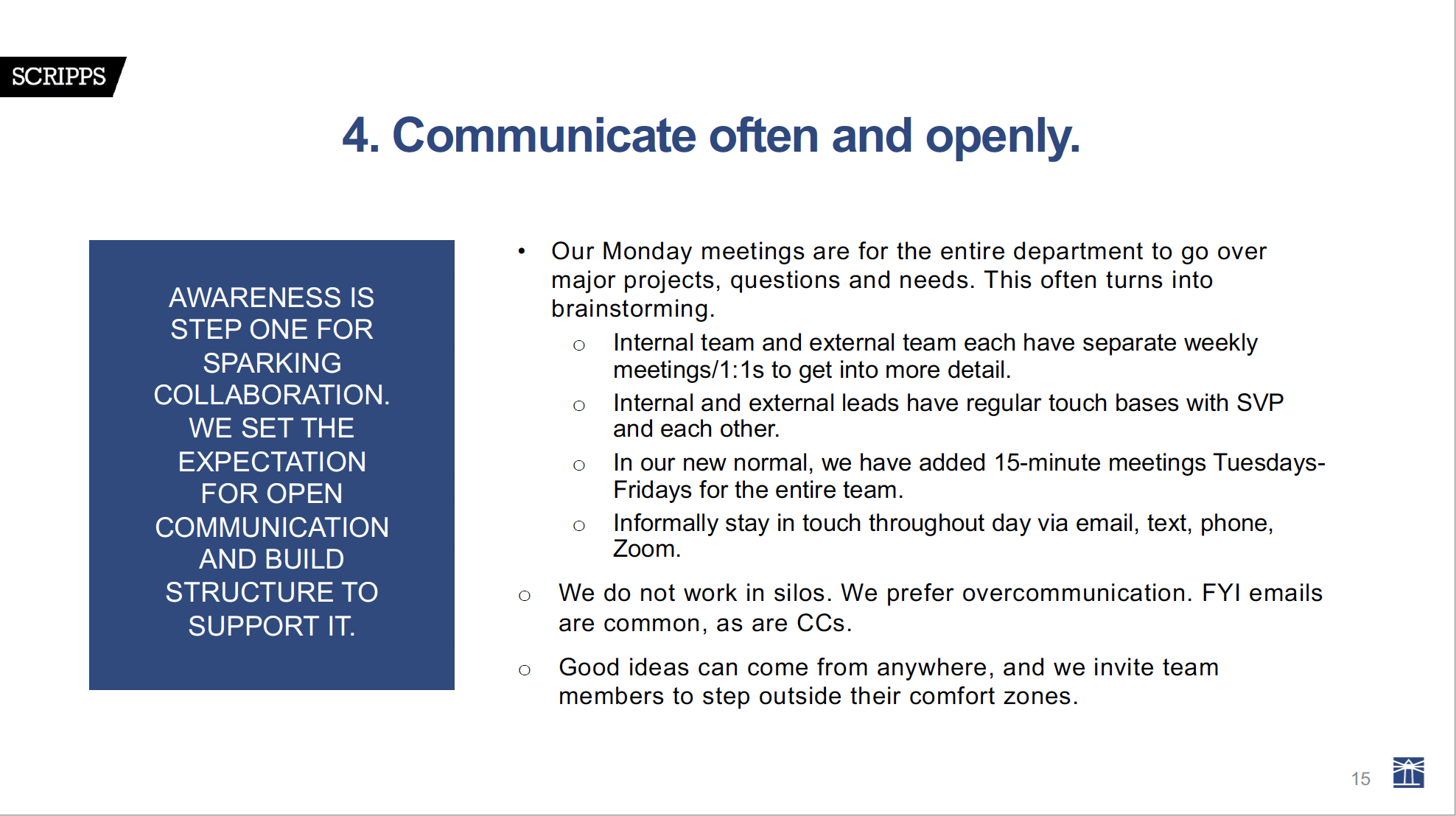11 benefits of mixternal collaboration
E.W. Scripps’ Kari Wethington and Beth Welter share why—and how—internal and external communications teams can collaborate better.

Calls to integrate communications are nothing new, but the pandemic has given communicators the opportunity to finally shed the silo mentality.
During Ragan’s “Master Mixternal Communications in the New Normal” virtual conference, E.W. Scripps’ Kari Wethington and Beth Welter shared some insights to help teams practice what they call “mixternal” communications.
“It all starts with recognizing a need to collaborate,” says Wethington, who directs external communications at the media company. “For us, we started to see a bigger need to speak from the same messaging playbook as the company’s footprint expanded.”
“There may be a few growing pains along the way,” says Welter, who oversees internal communications, “but the benefits are a pretty convincing argument to give it a shot.”

Image courtesy of E.W. Scripps.
So how to get started—what’s the best way to dip your toes into “mixternal” communications?
“Awareness is the first step,” says Wethington. “Commit to collaborating more and set up a structure that enables it. Sure, it’s a bit harder now that we’re not in the same office (since COVID-19), but just scheduling in a daily 15-minute check-in call goes a long way.”
Here’s a snapshot at how the E.W. Scripps communications team makes it happen:

Image courtesy of E.W. Scripps.
It may seem basic, but the collaborative approach is more crucial than ever these days when all employees—not just communicators—need to feel plugged in and valued.







